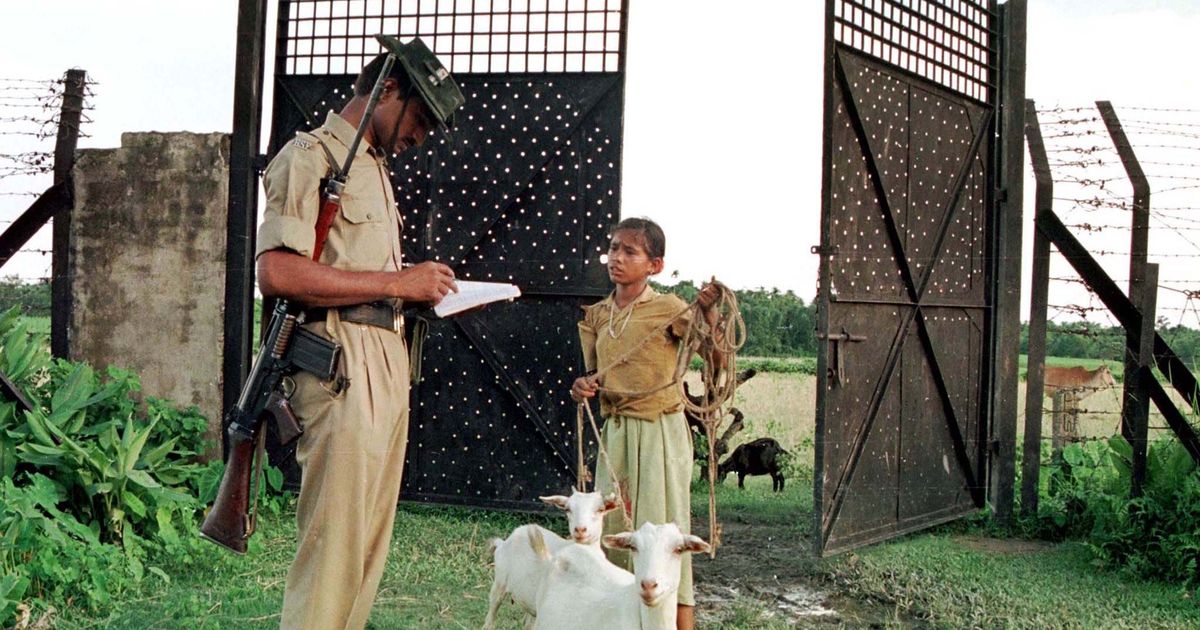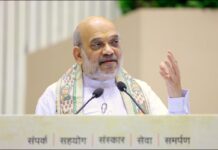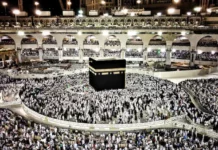NEW DELHI: India is likely to complete its seventh Integrated Check Post (ICP) at Dawki in Meghalaya on India-Bangladesh border in the next four months to boost cross-border trade and the efficient management of border crossings.
Being constructed since January 2017 and located about 84 km from Shillong, the capital city of Meghalaya, Dawki in West Jaintia Hills district is one of the major revenue generating export points.
It is learnt that the ICP was to be completed by 2018 after the then Union Minister of State for Home Kiren Rijiju laid the foundation stone of the project which is being built in an area spread over 22 acres, which include 2,456 square metres for a double-storeyed cargo terminal building, 4,625 sq m for a double-storeyed passenger terminal building, 1,420 sq m for a warehouse and 60,000 sq m for parking.
The project cost is Rs 92.34 crore and the total built-up area is 9,191 sq metres.
As the recently released annual Home Ministry report says that Dawki is still under construction, officials in the Land Port Authority of India (LPAI) indicated that it would be “probably” operationalised till March 2020.
LPAI is a statutory body working under the Ministry of Home Affairs and is responsible for creating, upgrading, maintaining and managing border infrastructure in India. It manages several ICPs all across borders of India.
Connected by the National Highway (NH) 44 (extension) and NH 40 (erstwhile Shillong Sylhet road), Dawki is used for export of major items like coal, limestone, raw hide, boulder stone, food items, plastic furniture, geotextile sheets, tissue paper, laundry soap, PVC door and fire clay brick to Bangladesh.
Trade statistics with number of cargo vehicle through Dawki was Rs 66.40 crore in 2014-15 (Export: Rs 66.4 crore; Import: Nil); Rs 134.91 crore in 2013-14 (Export: Rs 130.58 crore; Import: Rs 4.33 crore); and Rs 102.29 crore in 2012-13 (Export: Rs 98.84; Import: 3.45 crore), a latest LPAI data said.
Besides trade, most of the passengers crossing through the Dawki border are citizens from India and Bangladesh and the main purpose for their visit is business, education, medical, religious and tourism, a Home Ministry official said.
“Third country nationals also enter into India or exit from India through Dawki.”
A total of 14,524 people (Incoming 14,921, Outgoing 6,984) crossed India-Bangladesh border in 2014-15, 14,921 people (Incoming 7,596, Outgoing 7,325) in 2013-14 and 16,166 people (Incoming 8,222, Outgoing 7,944) crossed the border in 2012-13, the LPAI data said.
Dawki is connected by an all weather road to Shillong and is one of the most important land border crossings of the northeastern region of India, and will connect Tamabil, the corresponding place in Bangladesh.
Dawki is at an vantage point for the tourists of Bangladesh who regularly come to India for visiting Shillong and its neighbouring places of tourist interest.
After Agartala in Tripura and Petrapole (Cargo Terminal) in West Bengal that were operationalised since November 17, 2013 and February 12, 2016 respectively, Dawki is the third ICP being built on the India-Bangladesh border.
The ICPs are envisaged to provide all the facilities required for the discharge of sovereign and non sovereign functions to enable smooth cross border movement of individuals, vehicles and goods under an integrated complex. These would facilitate the processes of immigration, customs, security, and quarantine.
The Indian side of the 4,096.7 km India-Bangladesh border passes through West Bengal (2,216.7 km), Assam (263 km), Meghalaya (443 km), Tripura (856 km) and Mizoram (318 km). The entire stretch consists of plains, riverine belts, hills and jungles. The area is heavily populated and is cultivated right up to the border. IANS







